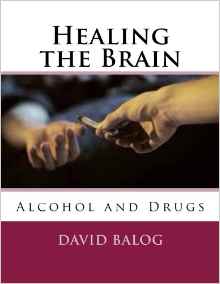
Brain
Broken Addiction Cycle
Quitting smoking can re-wire your brain and help break the cycle of addiction. The large number of nicotine receptors in your brain will return to normal levels after about a month of being quit.
Head and Face
Sharp Hearing
Quitting smoking will keep your hearing sharp. Remember, even mild hearing loss can cause problems (like not hearing directions correctly and doing a task wrong).
Better Vision
Quitting smoking will improve your night vision and help preserve your overall vision by stopping the damage that smoking does to your eyes.
Clean Mouth
Nobody likes a dirty mouth. After a few days without cigarettes, your smile will be brighter. Quitting smoking now will keep your mouth healthy for years to come.
Clear Skin
Quitting smoking is better than anti-aging lotion. Quitting can help clear up blemishes and protect your skin from premature aging and wrinkling.
Heart
Decreased Heart Risks
Smoking is the leading cause of heart attacks and heart disease. But many of these heart risks can be reversed simply by quitting smoking. Quitting can lower your blood pressure and heart rate almost immediately. Your risk of a heart attack declines within 24 hours.
Thin Blood
When you quit smoking, your blood will become thinner and less likely to form dangerous blood clots. Your heart will also have less work to do, because it will be able to move the blood around your body more easily.
Lower Cholesterol
Quitting smoking will not get rid of the fatty deposits that are already there. But it will lower the levels of cholesterol and fats circulating in your blood, which will help to slow the buildup of new fatty deposits in your arteries.
Lungs
Stop Lung Damage
Scarring of the lungs is not reversible. That is why it is important to quit smoking before you do permanent damage to your lungs. Within two weeks of quitting, you might notice it’s easier to walk up the stairs because you may be less short of breath. Don’t wait until later; quit today!
Prevent Emphysema
There is no cure for emphysema. But quitting when you are young, before you have done years of damage to the delicate air sacs in your lungs, will help protect you from developing emphysema later.
Return of Cilia
Cilia (The fine hairlike projections from certain cells such as those in the respiratory tract that sweep in unison and help to sweep away fluids and particles) start to regrow and regain normal function very quickly after you quit smoking. They are one of the first things in your body to heal. People sometimes notice that they cough more than usual when they first quit smoking. This is a sign that the cilia are coming back to life. But you’re more likely to fight off colds and infections when you’re cilia are working properly.
DNA
Lower Cancer Risk
Quitting smoking will prevent new DNA damage from happening and can even help repair the damage that has already been done. Quitting smoking immediately is the best way to lower your risk of getting cancer.
Stomach and Hormones
Smaller Belly
Quitting smoking will reduce your belly fat and lower your risk of diabetes. If you already have diabetes, quitting can help you keep your blood sugar levels in check.
Normal Estrogen Levels
If you’re a woman, your estrogen levels will gradually return to normal after you quit smoking. And if you hope to have children someday, quitting smoking right now will increase your chances of a healthy pregnancy in the future.
Erectile Dysfunction
Sexual Healing
If you quit smoking now, you can lower your chances of erectile dysfunction and improve your chances of having a healthy sexual life.
"The nicotine was making me dead, inside and out. Now I feel free, vibrant, energetic, focused, and so alive!"
-Smokefree Arwen
Blood and the Immune System
Normal White Blood Cell Count
When you quit smoking, your body will begin to heal from the injuries that smoking caused. Eventually, your white blood cell counts will return to normal and will no longer be on the defensive.
Proper Healing
Quitting smoking will improve blood flow to wounds, allowing important nutrients, minerals, and oxygen to reach the wound and help it heal properly.
Stronger Immune System
When you quit smoking, your immune system is no longer exposed to tar and nicotine. It will become stronger, and you will be less likely to get sick.
Muscles and Bones
Strong Muscles
Quitting smoking will help increase the availability of oxygen in your blood, and your muscles will become stronger and healthier.
Stronger Bones
Quitting smoking can reduce your risk of fractures, both now and later in life. Keep your bones strong and healthy by quitting now.
SmokeFree.gov
SmokeFree.gov

